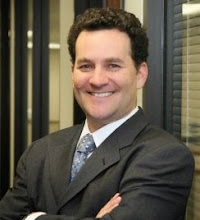Petitioners, Comcast Corporation and its subsidiaries, allegedly “cluster” their cable television operations within a particular region by swapping their systems outside the region for competitor systems inside the region. Respondents, named plaintiffs in this class-action antitrust suit, claim that they and other Comcast subscribers in the Philadelphia “cluster” are harmed because Comcast’s strategy lessens competition and leads to supra-competitive prices. They sought class certification under Federal Rule of Civil Procedure 23(b)(3), which requires that “questions of law or fact common to class members predominate over any questions affecting only individual members.”The District Court required them to show (1) that the “antitrust impact” of the violation could be proved at trial through evidence common to the class and (2) that the damages were measurable on a classwide basis through a “common methodology.” The court accepted only one of respondents’ four proposed theories of antitrust impact:that Comcast’s actions lessened competition from “overbuilders,” i.e., companies that build competing networks in areas where an incumbent cable company already operates. It then certified the class, finding that the damages from overbuilder deterrence could be calculated on a classwide basis, even though respondents’ expert acknowledged that his regression model did not isolate damages resulting from any one of respondents’ theories. In affirming, the Third Circuit refused to consider petitioners’ argument that the model failed to attribute damages to overbuilder deterrence because doing so would require reaching the merits of respondents’ claims at the class certification stage.
Held: Respondents’ class action was improperly certified under Rule 23(b)(3). Pp. 5–11.
(a) A party seeking to maintain a class action must be prepared to show that Rule 23(a)’s numerosity, commonality, typicality, and adequacy-of-representation requirements have been met, Wal-Mart Stores, Inc. v. Dukes, 564 U. S. ___, ___, and must satisfy through evidentiary proof at least one of Rule 23(b)’s provisions. The same analytical principles govern certification under both Rule 23(a) and Rule 23(b). Courts may have to “ ‘probe behind the pleadings before coming to rest on the certification question,’ and [a] certification is proper only if ‘the trial court is satisfied, after a rigorous analysis, that [Rule 23’s] prerequisites . . . have been satisfied.’ ” Ibid. The analysis will frequently “overlap with the merits of the plaintiff ’s underlying claim” because a “ ‘class determination generally involves considerations that are enmeshed in the factual and legal issues comprising the plaintiff ’s cause of action.’ ” Ibid. Pp. 5–6.
(b) The Third Circuit ran afoul of this Court’s precedents when it refused to entertain arguments against respondents’ damages model that bore on the propriety of class certification simply because they would also be pertinent to the merits determination. If they prevail, respondents would be entitled only to damages resulting from reduced overbuilder competition. A model that does not attempt to measure only those damages attributable to that theory cannot establish that damages are susceptible of measurement across the entire class for Rule 23(b)(3) purposes. The lower courts’ contrary reasoning flatly contradicts this Court’s cases, which require a determination that Rule 23 is satisfied, even when that requires inquiry into the merits of the claim. Wal-Mart, supra, at ___, and n. 6. Pp. 6–8.
(c) Under the proper standard for evaluating certification, respondents’ model falls far short of establishing that damages can be measured classwide. The figure respondents’ expert used was calculated assuming the validity of all four theories of antitrust impact initially advanced by respondents. Because the model cannot bridge the differences between supra-competitive prices in general and supracompetitive prices attributable to overbuilder deterrence, Rule 23(b)(3) cannot authorize treating subscribers in the Philadelphia cluster as members of a single class. Pp. 8–11.
Justices Ginsburg and Breyer
wrote a dissenting opinion, in which Justices Sotomayor and Kagan joined, arguing
that review was improvidently granted, that the question decided was not
properly before the Court, and that the majority’s decision was wrongly decided
and subject to misinterpretation:
While the Court’s decision to review the merits of the District Court’s certification order is both unwise and unfair to respondents, the opinion breaks no new ground on the standard for certifying a class action under Federal Rule of Civil Procedure 23(b)(3). In particular, the decision should not be read to require, as a prerequisite to certification, that damages attributable to a classwide injury be measurable “‘on a class-wide basis.’” See ante, at 2–3 (acknowledging Court’s dependence on the absence of contest on the matter in this case); Tr. of Oral Arg. 41.






No comments:
Post a Comment
Note: Only a member of this blog may post a comment.